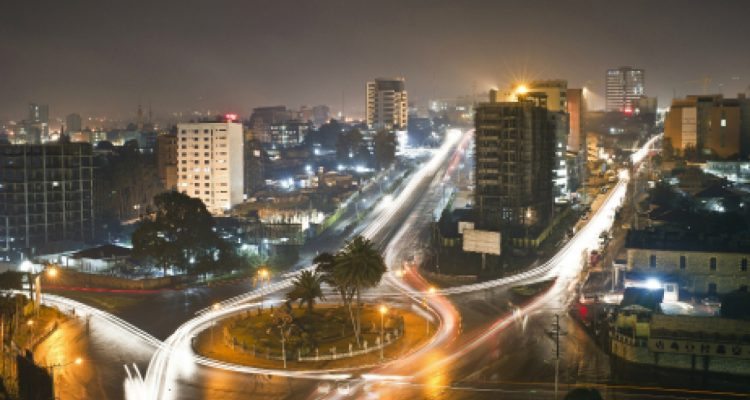What makes up the Ethiopian economy?
Ethiopia currently has a population of 112,411,076 million. Ethiopia’s economy is based on agriculture: 85% of the population is farmers. Despite difficult climatic conditions, the Ethiopians succeed in cultivating roses, grapes, all kinds of varieties of cereals, peanuts, fruits and vegetables, tea (production, processing and export), coffee, (with its Arabica coffee the country is the main producer in Africa).
Ethiopia has the largest livestock in the world (sheep, goats etc.). The country is the main producer and exporter of honey and beeswax in Africa. The country is increasingly integrating the development of industry (especially manufacturing) and expanding its exports. The service sector (banking, insurance, etc.) is still underdeveloped. The economy is also fueled by FDI (Foreign Direct Investments). In the 1990s, the country’s average growth was 2.8%, during the 2000s, it was around 8.6% and it has hovered around 9.7% since the 2010s.
Ethiopia’s economy over the past ten years
According to the ranking of the International Monetary Fund, Ethiopia has the highest economic growth in the past decade in the world. Its economy grew from 9.5% to 9.8%. Over the last ten years counting from 2010 to 2019, real GDP growth has averaged 9.5% per year. Recent IMF data revealed that Ethiopia was growing 7.44 percent in 2019. The population was then estimated at 108,493,469 million.
The country grew at 7.71% in 2018, with a real GDP of 6.8% for a population of around 105 million. This growth was based on favorable harvests, growth in air transport and manufacturing exports.
In 2017, growth was 10.15% for a GDP of 9.50%. According to this year’s census, the country had a little more than 103 million inhabitants and the economy was still driven mainly by agriculture, at 34% and services which represented a rate of 43, 1% of GDP.
In 2016, Ethiopia had a population of around 100 million. With a growth of 10.9% for a GDP of 9.43%. Agriculture accounted for 36% of the GDP, the industrial sector 39% and the service sector accounted for 25% of the GDP.
In 2015, the population was around 98.2 million and the country had a GDP of 10.39%. Agriculture produces 41.7% of GDP, 75% of jobs, and accounts for 80% of coffee and flower exports. The industry supported by the construction sub-sector accounts for 14.9% of GDP and is growing rapidly thanks to the rise of the manufacturing pole.
In 2014, Ethiopia’s population was around 95.8 million. The GDP was estimated at 10.26%. Industry accounted for 14.7% of GDP and services 43.4% of GDP.
In 2013, the country had a little more than 93.3 million inhabitants with a growth of 10.58% for a real GDP of 9.7%.
In 2012, the country had a little over 91 million inhabitants, the GDP was 8.65%. Industry accounted for 13% of GDP and the manufacturing sector accounted for 6% of GDP.
In 2011, the population was around 88.7 million, the GDP stood at 11.18%. Industry accounts for 9% of this rate.
In 2010 the population hovered around 86.5 million inhabitants. The GDP is estimated at 10.6%. That year, the government launched a five-year plan “for the growth and transformation” of Ethiopia with flagship projects such as the four-fold increase in the country’s electricity capacity, or the renovation of the railway line. between Addis Ababa and Djibouti to facilitate exports from Ethiopia.
Djibouti is the city where most of the exports and imports share, ie 90%. The most powerful wind farm (102 turbines, each 70 meters high) in sub-Saharan Africa has been installed some 100 kilometers south-east of Addis Ababa.
The second five-year plan, which runs from 2015 to 2020, is oriented towards the development of the transport, energy and telecommunications sectors with the aim of achieving the status of lower-middle-income countries by the year 2025. L he economic explosion brought about by these five-year plans made it possible that in 2017 more than 60% of infrastructure objectives had already been achieved.
Thanks to the expansion works of the airport, an airline of international standard Ethiopian Airlines, a road network in full extension, and the new railway line, Ethiopia aims to become the commercial hub not only of the East Africa but also Central Africa.
In 2020, growth is estimated at 7.2% with a real GDP which should stabilize between 7.1 and 7.2% until 2021. This estimate is based on the political and economic reforms implemented by the government . Despite exceptional economic growth, Ethiopia faces development challenges, including the disparities between rural and urban class.


Leave a Reply